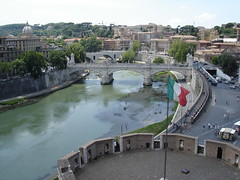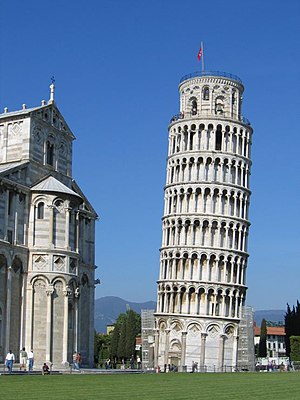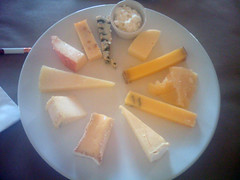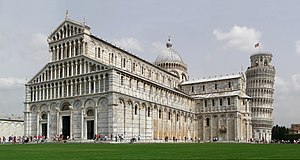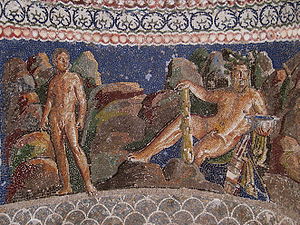How to Do <a class="zem_slink" href="http://www.comune.roma.it" title="Rome" rel="homepage">Rome</a> in 48hrs
By
Katy Hyslop
You've just arrived in Rome with a couple of days to kill. How is it possible to see all there is to see in such a short time? This is the guide to get the most out of Rome in the shortest amount of time.
19:00
Hopefully check in at the hotel has been fairly straightforward so now it is to venture out in search of a good meal. A meal in the old Trastevere part of the city has several benefits. Firstly there is a multitude of touristy type sidewalk restaurants and pizzerias to choose from and secondly they are within gentle strolling distance of several significant landmarks, including the well preserved Pantheon.
Rome is just as appealing by night as by day, with the heat of a Roman summer, night time walks may just save a few hours of excessive sweating during the day. Any of the little back streets between the Pantheon and the Spanish steps are perfectly placed to allow a generous meal of pasta and a good carafe of wine to be walked off quite easily.
21:00
Make your way to the Spanish steps to sit and hang out with the locals, while the view from the top of the steps in front of the church Trinita dei Monti offers a great view out over the city. Wander through to the Trevi Fountain and buy dessert in the form of a gelato and try your luck with the change. Throw one coin over your shoulder to come back, two coins to come back and get kissed or three coins to come back and be married.
22:00
Keep on walking through the streets until you reach Piazza Venezia, so named because of the Palazzo overlooking the piazza that resembles the Doges Palace in Venice. The balcony on the second floor may look familiar, it was the podium from which the dictator 'il duce' Mussolini delivered his fascist speeches. The other landmark overlooking the piazza is the unmistakable monument to Vittorio Emanuele II.
This has earned several nicknames over the years including the Wedding Cake and the Typewriter. The tomb of the Unknown Soldier lies here under armed guard along with the eternal flame. If the monument is open there is a fantastic view over the Rome rooftops, a glimpse into the Roman Forum and the Colosseum behind it. This is closed at dusk but many of the ruins are lit up at night.
23:00.
If the night air has revived you there is the option of checking out the local night life as there are plenty of bars and clubs open around the central city area. Also there are some in other piazzas such as Piazza Navona and
Campo dei Fiori that stay open until the early hours. Otherwise it's back to the hotel to get ready for tomorrow.
08:00
It pays to start early, particularly in the summer to beat the crowds and the temperatures but luckily the city is not too spread out to get from one sight to the next. The metro system is basic to use to say the least, there are only two metro lines that criss-cross the city and the buses are clearly marked with destinations. Termini is the central bus and metro terminal. Tickets must be bought before boarding and validated in the yellow machines, starting from EUR1 for one journey.
No visit to Rome is complete without a trip to the Vatican. San Pietro is on the western side of the river Tiber with the dome of St Peter's visible from most parts of the city. The Vatican museum rooms are open from 8.45 in the morning until 4pm, with the last entry just before 3.30pm, during the busy summer months. It is open until 1pm on Saturdays and low season, while it is closed on Sundays and religious observances. You need plenty of time to walk through the 7km of museum rooms to reach the Sistine chapel where you can admire the detail and wonder at the creation on the ceiling by Michelangelo. It pays to have some sort of description of the frescoes handy to explain what you are looking at. The Pope gives his public address on Wednesday mornings at 11am.
13:00
If you are still hungry for more there is the vast interior of the Basilica itself, the crypt below and the view from the dome above down into the square. Now is probably a good time to find some lunch before taking on the Colosseum and the Roman Forum. Take plenty of water with you in the summer months as wily vendors will sell small bottles at exorbitant prices. Along lunch also gets you out of the hottest part of the day.
15:00
Entry tickets to the Colosseum can be bought at the gate but if the line is too long you can go to the ticket window at the base of the Palatine hill and buy them there. The line here is generally much shorter as not many tourists go up the hill. The remains of the Emperors palace stands at the top overlooking the forum and quite stretegically down on the Temple of the Vestal Virgins. This hill is also said to be where Romulus founded Rome.
Beside the Colosseum stands the Arch of Constantine, which was an exercise in recycling of old monuments by Emperor Constantine to reward himself for beating Maxentius. The Colosseum has been damaged over the last 1800 years by earthquakes, invaders and marble merchants but the recent restoration projects has seen parts of it restored to give a good idea of its original state.
16:00
The
Via Sacre leads from the Colosseum up into the Foro Romano, the centre of the ancient Roman trading world. The ruins include the original forum, Julius Caesar's funeral pyre, his Senate building, the Temple of the Vestal Virgins and the arch of Septimus Severus. The forum was buried over several hundreds of years of flooding, each layer has been stripped back to reveal another Roman era, and in some cases where two eras have merged, as in the case of the Temple of Antonino and Faustina. The door that stands halfway up the exposed wall shows where the ground level was during the 8th Century when the 2nd Century temple was converted to church.
There are plenty of tour guides available as history students and licensed guides offer their services with tours of the forum and the coliseum. The stories they tell really help the ruins to come alive. Across the road is Trajan's Forum with the very conspicuous Trajan's column. This marks the edge of ancient Rome and the continuation of the modern city. Unfortunately most of ancient Rome lies beneath the Via dei Fiori Imperiali, the road built by Mussolini to parade his troops up and down before going off to battle.
17:00
The rest of the day can be spent either indulging in some people watching at any of the cafes in Piazza Navona and admiring the Fontana dei Quattro Fiumi sculptured by Bernini, or relaxing in the shade in the park at the 17thC Villa Borghese. Then its back to those clubs you missed last night.
08:00
This really depends on when you decide to leave. An early evening departure may enable you to take in one of three options provided you start early. The baths of Caracalla is a 10 hectare space that once held 1600 people there to take advantage of the bathing, shops, libraries, gardens and public entertainment. These open at 9am closing 1 hour before sunset and 2pm on a Monday. You would need around 3-4 hours including travel time to view these.
The other option is to visit one of the vast catacombs that are buried beneath the city. These are miles and miles of tunnels, burial vaults and Churches dug by the early Christians to escape persecution by the Romans. The burial vaults are countless metres tall and the tunnels run down over several levels. The resulting rabbit warren requires a guide to take you through and out again safely. You can choose from the ones on the Via Appia Antica, which are the largest, or the Catacombs of San Callisto which are next door to the Catacombs of San Sebastiano. They open at 8.30am closing at noon, reopening in the afternoon from 2.30pm until 5pm. Again you would need 3-4 hours to take one site in.
10:00
The third and final choice is to leave the whole touristy thing out and indulge in some authentic food experiences. The food markets north of the Vatican are held just off Viale dele Millizie and the ones in Piazza Vittorio Emanuele near Termini offer a selection of fresh and locally made produce.
There you have it, all the major attractions of Rome achievable in just 2 days. The choice now is, do I really want to leave just yet?
Katy Hyslop has spent the past 6 years travelling, tour guiding and generally hanging around the European tourism industry. She is now based in Italy and in charge of keeping the crew under control at Plus. If you want to know more on what to see or where to stay in Rome click here [http://www.plusvillages.com/HostelsInRome.aspx].
Article Source:
http://EzineArticles.com/?expert=Katy_Hyslop
http://EzineArticles.com/?How-to-Do-Rome-in-48hrs&id=237509
E-Book
PrintBook
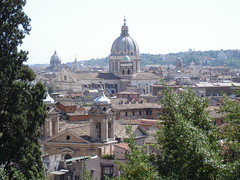 Rome (Photo credit: ryarwood)
Rome (Photo credit: ryarwood)